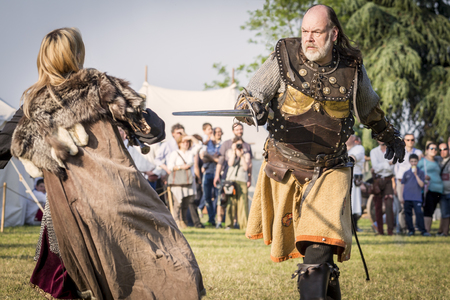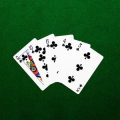Introduction to British Folklore and Tarot
Britain’s landscape is steeped in centuries-old tales, mythical creatures, and seasonal traditions that form a rich folkloric heritage. From the rolling hills of the Cotswolds to the misty moors of Yorkshire, stories of faeries, cunning folk, Green Men, and wise women have shaped local culture and everyday life. This deep well of myth and legend naturally complements the practice of tarot—a system also rooted in symbolism, intuition, and storytelling. For those living in the UK or anyone drawn to its lore, incorporating elements of British folklore into your daily tarot readings can offer a more grounded and authentic experience. By drawing on familiar legends and spirits from the land beneath your feet, you not only connect with tradition but also enrich your intuitive process. This approach helps deepen both understanding of the cards and personal resonance with their messages, making each reading feel truly local and meaningful.
2. Choosing Your Tools: Decks, Charms, and Folk-inspired Items
When weaving British folklore into your daily tarot practice, the first step is to select tools that resonate with local stories and customs. While many tarot decks are available, choosing one that features British myths, landscapes, or legendary figures can set a meaningful tone for your readings. Look for decks inspired by Arthurian legends, Celtic symbols, or the lore of local regions such as Cornwall or the Scottish Highlands.
Deck Selection: Reflecting Local Legends
Seek out tarot decks that not only illustrate traditional tarot imagery but also incorporate elements unique to British culture. For example, you might find The Wildwood Tarot, which draws on pre-Celtic mythology and woodland symbolism. Alternatively, decks depicting Robin Hood, Avalon, or stone circles echo the magic of the British Isles.
Recommended Decks and Their Folklore Roots
| Deck Name | Folklore Source | Key Features |
|---|---|---|
| The Wildwood Tarot | Celtic & Pre-Celtic Mythology | Ancient woodland motifs, seasonal wheel of the year |
| The DruidCraft Tarot | Druidic Traditions | Druid and Wiccan symbolism, British landscape art |
| The Arthurian Tarot | Arthurian Legends | Characters from King Arthur’s court, Grail symbolism |
Incorporating Charms and Accessories
Beyond cards, charms and objects rooted in British superstition add depth to your readings. Consider using hag stones (stones with natural holes), horseshoes for luck, or small sprigs of rowan for protection. Accessories crafted by local artisans—like handwoven cloths featuring regional patterns—enhance the connection to place and tradition.
Common Folk-Inspired Accessories and Their Meanings
| Accessory | Cultural Significance |
|---|---|
| Hag Stone | Believed to ward off evil spirits when hung near tarot space |
| Corn Dolly | A symbol of harvest blessing and abundance in readings |
| Pewter Pendants (e.g., Green Man) | Invokes nature spirits and ancient wisdom during divination |
Selecting with Intention and Respect
Avoid treating these items as mere decorations—each carries meaning rooted in generations of belief. Choose tools that speak to your personal heritage or the local area where you live. This mindful selection process builds a bridge between daily tarot work and the living tapestry of British folklore.
![]()
3. Daily Rituals: Infusing Folklore into Everyday Readings
Bringing British folklore into your daily tarot practice doesn’t require grand gestures or elaborate ceremonies. Instead, it’s about gently threading local legends, customs, and sayings into your regular readings—creating a uniquely British atmosphere each time you draw the cards. Here’s a step-by-step approach to help you get started:
Step 1: Set the Scene with Local Atmosphere
Begin by creating an environment that echoes traditional British sensibilities. You might light a beeswax candle, use a cup of strong builder’s tea, or lay out your cards on a tartan cloth. Consider including a small charm like a horseshoe or hag stone as a nod to protective folk magic.
Step 2: Choose a Folklore Focus
Decide which aspect of British folklore you’d like to weave into today’s reading. For example, Mondays could be dedicated to faerie lore—inviting the spirit of woodland mischief and wisdom. Wednesdays might focus on old English proverbs or Scottish weather sayings that offer guidance.
Step 3: Incorporate Seasonal Customs
Tune your tarot spreads to the rhythm of the British calendar. At Beltane (May Day), ask your cards how to invite new beginnings and love, reflecting the festival’s themes. During Lammas, explore what harvest you are reaping in life. These seasonal overlays give extra local colour and relevance.
Step 4: Use Folk Sayings as Prompts
Let time-honoured British expressions guide your questioning. Try prompts like “Don’t count your chickens before they hatch” when asking about future plans, or “Make hay while the sun shines” for opportunities and timing. These sayings can shape both the spread and interpretation.
Step 5: Reflect and Record Your Insights
Finish each session by jotting down not only your card meanings but also how the chosen folklore theme coloured your experience. Over time, this builds a personal grimoire rich with British context—a living record of both tarot insights and ancestral wisdom.
This blend of daily practice and local tradition ensures your tarot journey remains grounded, relatable, and distinctly British—just as any local would have it.
4. Storytelling through the Cards: Linking Archetypes with British Legends
One of the most engaging ways to infuse your daily tarot practice with British folklore is by drawing direct parallels between tarot archetypes and celebrated figures from local legends. By weaving these stories into your readings, you not only make the cards more relatable but also preserve and celebrate the rich storytelling tradition of the UK. This approach transforms each draw into an opportunity to connect with a tapestry of myth and history, making every reading feel grounded in a uniquely British context.
Methods for Blending Tarot and Folklore
To get started, select one or two tarot archetypes and identify their closest counterparts in British folklore. For example, The Hermit can be likened to Merlin from Arthurian legend—a wise figure seeking knowledge in solitude. Similarly, The Lovers card may evoke Robin Hood and Maid Marian, symbolising partnership and shared values against adversity. When you pull a card, reflect on its associated legend; ask how that storys themes resonate with your current situation or question.
Parallels Between Tarot Archetypes and British Folk Characters
| Tarot Card | British Legend | Storytelling Focus |
|---|---|---|
| The Hermit | Merlin (Arthurian Legend) | Wisdom, solitude, guiding others from behind the scenes |
| The Lovers | Robin Hood & Maid Marian | Loyalty, love defying odds, moral choices |
| The Moon | The Selkie (Scottish Folklore) | Mystery, intuition, hidden truths |
| The Tower | Tower of London Ghost Stories | Sudden change, upheaval, revelation |
Tips for Bringing Local Tales into Readings
- Begin each session by briefly recounting the relevant folk story as it relates to your drawn card.
- Ask reflective questions: “What would Merlin do if faced with this dilemma?” or “How does the spirit of Robin Hood inspire my actions today?”
- Encourage journaling about how these narratives mirror your own life’s journey or current challenges.
This storytelling method not only enriches your personal readings but also deepens your connection to local heritage. Over time, you’ll find that archetypes become living symbols—rooted in both ancient wisdom and Britain’s enduring tales.
5. Interpreting Signs: Folklore-based Perspectives for Card Meanings
Adapting your tarot card interpretations to reflect British folklore can bring a grounded, local resonance to each reading. Over centuries, the British Isles have nurtured a wealth of superstitions, omens, and nature-based wisdom—elements that can enrich your tarot practice in both subtle and profound ways.
Superstitions and Everyday Omens
Incorporate everyday British superstitions into your readings for deeper relevance. For example, if you draw the Tower card, consider local beliefs about magpies—”one for sorrow, two for joy”—and ask whether the querent is noticing signs in their daily life that echo this card’s theme of sudden change or upheaval. Likewise, the appearance of a black cat in the imagery might reference luck or protection, depending on regional lore.
Naturally Rooted Wisdom
British folklore places strong emphasis on the natural world. When interpreting cards like The Empress or The Star, connect them with local plants and weather lore: hawthorn for protection, rowan against enchantment, or rainbows as harbingers of hope. This approach not only grounds readings in familiar landscapes but also encourages querents to observe their surroundings more closely.
Bridging Tradition and Tarot
Blending traditional card meanings with these local nuances invites a richer dialogue between tarot and the everyday world. When you next encounter the Moon card, think of tales of will-o’-the-wisps misleading travellers across moors; when drawing the Lovers, recall stories of faerie rings symbolising enchantment and union. Over time, your personal lexicon of omens will grow—a living tradition unique to your practice yet deeply rooted in British cultural memory.
6. Building Community: Sharing Folklore-Infused Tarot Practices
One of the most rewarding aspects of weaving British folklore into your tarot practice is the opportunity it offers for building community and forging deeper connections. This approach isn’t just about personal insight; it’s about sharing stories, traditions, and interpretations that have shaped communities for centuries. Here are some practical suggestions for connecting with others and nurturing a uniquely British tarot culture.
Host Local Gatherings and Story Circles
Consider organising informal meet-ups at local pubs, village halls, or even cosy living rooms. Encourage participants to bring their favourite folklore tales—be they Cornish mermaid legends, Yorkshire ghost stories, or Scottish selkie myths—and discuss how these narratives might influence specific tarot cards or readings. These gatherings can foster a collaborative atmosphere where everyone learns from each other’s regional heritage and perspective.
Engage Family Traditions
If you have family members with roots in different parts of Britain, ask them to share tales passed down through generations. Use these stories as focal points in group tarot sessions, drawing parallels between ancestral wisdom and the messages revealed by the cards. This not only helps preserve folklore but also makes tarot reading a meaningful, intergenerational experience.
Connect Online with Local Groups
For those unable to meet in person, seek out UK-based tarot forums or social media groups focused on British folklore and mystical traditions. Share your experiences integrating local legends into your readings, exchange spreads inspired by specific stories, and collaborate on new interpretations that reflect contemporary British life while honouring the past.
Create Communal Tarot Resources
Work together to build shared resources such as folklore-inspired tarot spreads, glossaries of regional spirits and legends, or collections of communal stories reflecting your area’s unique character. These living documents can evolve over time as more voices contribute, ensuring that this distinctly British style of tarot reading remains dynamic and relevant.
By actively sharing and developing folklore-infused tarot practices with friends, family, and local groups, you help preserve Britain’s storytelling heritage while keeping the tarot tradition vibrant and inclusive. In doing so, you become part of a wider movement dedicated to evolving both the art of divination and the tapestry of local culture.


